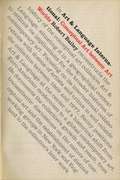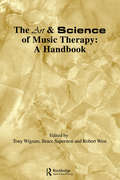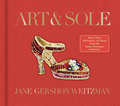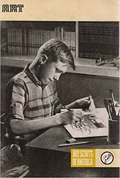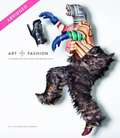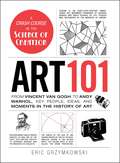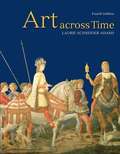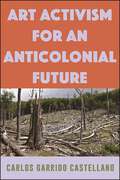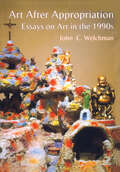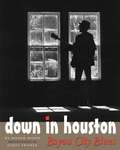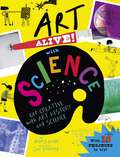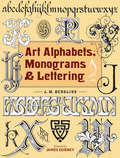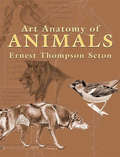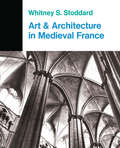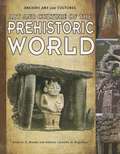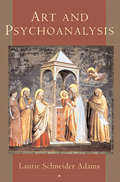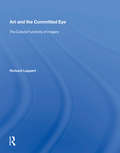- Table View
- List View
Art & Language International: Conceptual Art between Art Worlds
by Robert BaileyIn Art & Language International Robert Bailey reconstructs the history of the conceptual art collective Art & Language, situating it in a geographical context to rethink its implications for the broader histories of contemporary art. Focusing on its international collaborations with dozens of artists and critics in and outside the collective between 1969 and 1977, Bailey positions Art & Language at the center of a historical shift from Euro-American modernism to a global contemporary art. He documents the collective's growth and reach, from transatlantic discussions on the nature of conceptual art and the establishment of distinct working groups in New York and England to the collective's later work in Australia, New Zealand, and Yugoslavia. Bailey also details its publications, associations with political organizations, and the internal power struggles that precipitated its breakdown. Analyzing a wide range of artworks, texts, music, and films, he reveals how Art & Language navigated between art worlds to shape the international profile of conceptual art. Above all, Bailey underscores how the group's rigorous and interdisciplinary work provides a gateway to understanding how conceptual art operates as a mode of thinking that exceeds the visual to shape the philosophical, historical, and political.
Art & Science of Music Therapy: A Handbook
by Tony Wigram Robert West Bruce SaperstonFirst Published in 1995. Routledge is an imprint of Taylor & Francis, an informa company.
Art & Sole
by Jane Gershon WeitzmanNot meant to be worn, art shoes are pure fantasy, constructed of unique materials in various shapes and silhouettes. The art shoes in the Stuart Weitzman collection are made from a vast array of materials--feathers, paper, ceramic, metal, resin, playing cards, corrugated cardboard, Swarovski crystals, even fresh flowers and frosting--and their intricate construction and imagination is remarkable. Art & Sole features in printed form for the first time Jane Weitzmans selection of the best of this collection, approximately 150 shoes of the more than 1,000 she has discovered and commissioned for display since the first Stuart Weitzman retail shop opened in the mid-1990s on Madison Avenue. With an introduction by Weitzman, Art & Sole highlights shoes from the collection, along with brief, identifying captions, in an impeccably designed, graphically compelling, artful package. Thumbnail photographs of every shoe in the book, along with a brief biography on the artist who created it, are also included. The books deluxe details--a cloth case with an elaborately embossed shoe; gilded edges, and a satin silk marker--make it the perfect gift for any occasion.
Art (Merit Badge Series)
by Boy Scouts of AmericaThis book introduces scouts to the wonder of art in many of its forms.
Art + DIY Electronics
by Garnet HertzA systematic theory of DIY electronic culture, drawn from a century of artists who have independently built creative technologies.Since the rise of Arduino and 3D printing in the mid-2000s, do-it-yourself approaches to the creative exploration of technology have surged in popularity. But the maker movement is not new: it is a historically significant practice in contemporary art and design. This book documents, tracks, and identifies a hundred years of innovative DIY technology practices, illustrating how the maker movement is a continuation of a long-standing creative electronic subculture. Through this comprehensive exploration, Garnet Hertz develops a theory and language of creative DIY electronics, drawing from diverse examples of contemporary art, including work from renowned electronic artists such as Nam June Paik and such art collectives as Survival Research Laboratories and the Barbie Liberation Front. Hertz uncovers the defining elements of electronic DIY culture, which often works with limited resources to bring new life to obsolete objects while engaging in a critical dialogue with consumer capitalism. Whether hacking blackboxed technologies or deploying culture jamming techniques to critique commercial labor practices or gender norms, the artists have found creative ways to make personal and political statements through creative technologies. The wide range of innovative works and practices profiled in Art + DIY Electronics form a general framework for DIY culture and help inspire readers to get creative with their own adaptations, fabrications, and reimaginations of everyday technologies.
Art + Fashion
by E. P. Cutler Julien TomaselloA volume of magnificent proportions, Art + Fashion is as exciting and elegant as the creative partnerships it celebrates. Spanning numerous eras, men and women's fashion, and a wide range of art mediums, these 25 collaborative projects reveal the astonishing work that results when luminaries from the art world (such as Pollock, Haring, and Hirst) come together with icons of the fashion world (including Saint Laurent, Westwood, McQueen). From 20th-century legends such as Elsa Schiaparelli and her famous lobster dress painted by Salvador Dalí to 21st-century trailblazers such as Cindy Sherman and her self-portraits in vintage Chanel, these electric and provocative pairings--represented in lavish visuals and thoughtful essays reflecting on the history of each project--brim with the energy and possibility of powerful forces uniting.
Art + Fashion, Abridged Reading Edition
by E. P. Cutler Julien TomaselloArt + Fashion is as exciting and elegant as the creative partnerships it celebrates. In this abridged reading edition, readers will enjoy the book's sparkling and informative text in its entirety, plus a single stunning representative photo of each of the 25 collaborative projects profiled. Spanning numerous eras, men and women's fashion, and a wide range of art mediums, these collaborations reveal the astonishing work that results when luminaries from the art world (such as Pollock, Haring, and Hirst) come together with icons of the fashion world (including Saint Laurent, Westwood, McQueen). From 20th-century legends such as Elsa Schiaperelli and her famous lobster dress painted by Salvador Dalí to 21st-century trailblazers such as Cindy Sherman and her self-portraits in vintage Chanel, these electric and provocative pairings brim with the energy and possibility of powerful forces uniting.
Art 101
by Eric GrzymkowskiExplore the beautiful and complex world of art! Too often, textbooks obscure the beauty and wonder of fine art with tedious discourse that even Leonardo da Vinci would oppose. Art 101 cuts out the boring details and lengthy explanations, and instead, gives you a lesson in artistic expression that keeps you engaged as you discover the world's greatest artists and their masterpieces. From color theory and Claude Monet to Jackson Pollock and Cubism, this primer is packed with hundreds of entertaining tidbits and works of art that you won't be able to get anywhere else. So whether you're looking to master classic painting techniques, or just want to learn more about popular styles of art, Art 101 has all the answers--even the ones you didn't know you were looking for.
Art 101: From Vincent van Gogh to Andy Warhol, Key People, Ideas, and Moments in the History of Art
by Eric GrzymkowskiExplore the beautiful and complex world of art!Too often, textbooks obscure the beauty and wonder of fine art with tedious discourse that even Leonardo da Vinci would oppose. Art 101 cuts out the boring details and lengthy explanations, and instead, gives you a lesson in artistic expression that keeps you engaged as you discover the world's greatest artists and their masterpieces.From color theory and Claude Monet to Jackson Pollock and Cubism, this primer is packed with hundreds of entertaining tidbits and works of art that you won't be able to get anywhere else.So whether you're looking to master classic painting techniques, or just want to learn more about popular styles of art, Art 101 has all the answers--even the ones you didn't know you were looking for.
Art Above Everything: One Woman's Global Exploration of the Joys and Torments of a Creative Life
by Stephanie Elizondo GriestMeet queer, BIPOC, and women artists around the world as they discuss the gifts, costs, and redemptive power of pursuing a creative lifeIs the all-encompassing quest to become a self-sustaining artist worth the sacrifices it often requires? Throughout her 20s and 30s, Stephanie Elizondo Griest could not help worrying if constantly prioritizing her writing over everything else—from postponing children to living nomadically to save on rent—was leading her to fulfillment or regret. After a break-up and serious health crisis in her early 40s, she decided to turn to other women artists for their perspectives on that perennial question: is art enough?Art Above Everything introduces us to legendary writers, visual artists, dancers, and musicians across the globe, who talk intimately about their art, what it requires, what it gifts them, and what it costs them. Opening in a classical Indian dance village, Elizondo Griest goes on to meet 100+ artists in Rwanda, Romania, Qatar, Iceland, Mexico, New Zealand, Cuba, and the United States. She discovers artists from Rwandan playwright Hope Azeda, who navigated ethnic tensions as she attempted to bring about reconciliation through theater in the aftermath of genocide; to Romanian painter Florica Prevenda, who got assigned to a provincial factory during Ceaușescu&’s dictatorship but never relinquished her brushes.Art is inheritance, dissent, devotion, revenge, celebration, and more. Yet though each artist&’s relationship to their craft is different, their need to create in the face of economic hardship, misogyny, sexual violence, and family ostracization is wholly akin.Bold and inspiring, Art Above Everything never pretends that the artist&’s path is easy—but it illuminates the infinite ways we can wield creativity as a vitalizing force.
Art Across Time Combined (Fourth Edition)
by Laurie Schneider AdamsArt across Time combines sound scholarship, lavish visuals, and a lively narrative to provide students with a comprehensive, accessible, and engaging introduction to Art History. Popular with majors and non-majors alike, the text offers readers more than a chronology of art by placing each work within the time-and-place context within which it was created. <P><P>Encountering and interpreting a work of art in context offers the reader the richest possible experience of it. Large scale and high quality visual reproductions of artworks are often presented from multiple perspectives to enhance visual appeal and allow students to view details and elements of composition with greater ease. A thoughtful pedagogical approach helps students consider what they are viewing.
Art Activism for an Anticolonial Future (SUNY series, Praxis: Theory in Action)
by Carlos Garrido CastellanoAnalyzing the confluence between coloniality and activist art, Art Activism for an Anticolonial Future argues that there is much to gain from approaching contemporary politically committed art practices from the angle of anticolonial, postcolonial, and decolonial struggles. These struggles inspired a vast yet underexplored set of ideas about art and cultural practices and did so decades before the acceptance of radical artistic practices by mainstream art institutions. Carlos Garrido Castellano argues that art activism has been confined to a limited spatial and temporal framework—that of Western culture and the modernist avant-garde. Assumptions about the individual creator and the belated arrival of derivative avant-garde aesthetics to the periphery have generated a narrow view of “political art” at the expense of our capacity to perceive a truly global alternative praxis. Garrido Castellano then illuminates such a praxis, focusing attention on socially engaged art from the Global South, challenging the supposed universality of Western artistic norms, and demonstrating the role of art in promoting and configuring a collective critical consciousness in postcolonial public spheres.This book is freely available in an open access edition thanks to Knowledge Unlatched—an initiative that provides libraries and institutions with a centralized platform to support OA collections and from leading publishing houses and OA initiatives. Learn more at the Knowledge Unlatched website at: https://www.knowledgeunlatched.org/, and access the book online at the SUNY Open Access Repository at http://hdl.handle.net/20.500.12648/7166.
Art After Appropriation: Essays on Art in the 1990s
by John C. WelchmanBeginning with the first comprehensive account of the discourse of appropriation that dominated the art world in the late 1970s and 1980s, Art After Appropriation suggests a matrix of inflections and refusals around the culture of taking or citation, each chapter loosely correlated with one year of the decade between 1989 and 1999. The opening chapters show how the Second World culture of the USSR gave rise to a new visibility for photography during the dissolution of the Soviet Union around 1989. Welchman examines how genres of ethnography, documentary and travel are crossed with fictive performance and social improvisation in the videos of Steve Fagin. He discusses how hybrid forms of subjectivity are delivered by a new critical narcissism, and how the Korean-American artist, Cody Choi converts diffident gestures of appropriation from the logic of material or stylistic annexation into continuous incorporated events. Art After Appropriation also examines the creation of public art from covert actions and social feedback, and how bodies participate in their own appropriation. Art After Appropriation concludes with the advent of the rainbow net, an imaginary icon that governs the spaces of interactivity, proliferation and media piracy at the end of the millennium.John Welchman is Professor of Modern Art History, Theory and Criticism at the University of California, San Diego. He is the author of Modernism Relocated (1995) and Invisible Colors (1997); and editor of Rethinking Borders (1996), and a forthcoming three-volume anthology of the writings of LA artist MIke Kelley. Welchman has contributed to numerous journals, magazines, museum catalogues and newspapers, including Artforum; New York Times; Los Angeles Times; International Herald Tribune; Los Angeles County Museum of Art; Tate Gallery; Museum of Contemporary Art, Los Angeles; Reina Sofia, Madrid; Haus der Kunst, Munich
Art After Instagram: Art Spaces, Audiences, Aesthetics (Routledge Advances in Art and Visual Studies)
by Lachlan MacDowall Kylie BudgeThis book explores the effects of the Instagram platform on the making and viewing of art. Authors Lachlan MacDowall and Kylie Budge critically analyse the ways Instagram has influenced artists, art spaces, art institutions and art audiences, and ultimately contemporary aesthetic experience. The book argues that more than simply being a container for digital photography, the architecture of Instagram represents a new relationship to the image and to visual experience, a way of shaping ocular habits and social relations. Following a detailed analysis of the structure of Instagram – the tactile world of affiliation (‘follows’), aesthetics (‘likes’) and attention (‘comments’) – the book examines how art spaces, audiences and aesthetics are key to understanding its rise. The book will be of interest to scholars working in art history, design, digital culture, cultural studies, sociology, education, business, media and communication studies.
Art After Instagram: Art Spaces, Audiences, Aesthetics (Routledge Advances in Art and Visual Studies)
by Lachlan MacDowall Kylie BudgeThis book explores the effects of the Instagram platform on the making and viewing of art.Authors Lachlan MacDowall and Kylie Budge critically analyse the ways Instagram has influenced artists, art spaces, art institutions and art audiences, and ultimately contemporary aesthetic experience. The book argues that more than simply being a container for digital photography, the architecture of Instagram represents a new relationship to the image and to visual experience, a way of shaping ocular habits and social relations. Following a detailed analysis of the structure of Instagram – the tactile world of affiliation (‘follows’), aesthetics (‘likes’) and attention (‘comments’) – the book examines how art spaces, audiences and aesthetics are key to understanding its rise.The book will be of interest to scholars working in art history, design, digital culture, cultural studies, sociology, education, business, media and communication studies.
Art Against Dictatorship: Making and Exporting Arpilleras Under Pinochet
by Jacqueline AdamsArt can be a powerful avenue of resistance to oppressive governments. During the dictatorship of Augusto Pinochet in Chile, some of the country's least powerful citizens-impoverished women living in Santiago's shantytowns-spotlighted the government's failings and use of violence by creating and selling arpilleras, appliquéd pictures in cloth that portrayed the unemployment, poverty, and repression that they endured, their work to make ends meet, and their varied forms of protest. Smuggled out of Chile by human rights organizations, the arpilleras raised international awareness of the Pinochet regime's abuses while providing income for the arpillera makers and creating a network of solidarity between the people of Chile and sympathizers throughout the world. Using the Chilean arpilleras as a case study, this book explores how dissident art can be produced under dictatorship, when freedom of expression is absent and repression rife, and the consequences of its production for the resistance and for the artists. Taking a sociological approach based on interviews, participant observation, archival research, and analysis of a visual database, Jacqueline Adams examines the emergence of the arpilleras and then traces their journey from the workshops and homes in which they were made, to the human rights organizations that exported them, and on to sellers and buyers abroad, as well as in Chile. She then presents the perspectives of the arpillera makers and human rights organization staff, who discuss how the arpilleras strengthened the resistance and empowered the women who made them.
Art Alive! with Science: Get creative with art history and science!
by Mary AuldExperience how art meets science, from the earliest cave paintings to today's advanced tech - and meet the innovative artists behind it all!In Art Alive! with Science, award-winning author Mary Auld explores moments from art history that have expanded our understanding of the way things work, such as the beautiful balance of forces in kinetic sculpture, the interplay of light and shadow in painting and puppetry and how Op Art tricks our brains and plays with our senses. Following each case study of astounding innovation, there is a creative project that applies the scientific learning to the reader's own art practice. The unique art style of illustrator Sue Downing is sure to draw in young artists, especially alongside the photos of each artist's work and contribution to the timeline of innovation. Perfect for children age 8 and up.Artists and science principles inside include:Introduction: Artists and scientists from cave painting to bronze castingThe art of anatomy with Myron's Discobolus (Discus Thrower)The science of illustration with Hildegard of Bingen and Abd al-Rahman al-SufiThe fantasy of flight with Leonardo da VinciThe drama of light with Caravaggio's chiaroscuro and wayang kulit shadow puppetryThe art of nature with Ustad Mansur and Maria Sibylla MerianThe image in perspective with Johannes Vermeer's The GeographerThe science of clouds with Luke Howard, Caspar David Friedrich and John ConstableThe sense of colour with expressionism and pointillismThe structure of flowers with Georgia O'KeeffeThe energy of sound with Paul Klee's PolyphonyThe balance of forces with Alexander Calder's kinetic sculpturesThe art of astronomy with Galileo, Lucien Rudaux and NASAThe art of light with Pablo Picasso, Gjon Mili and their famous light drawing collaborationThe art of illusion with Marina ApollonioThe science of materials with Anish KapoorThe structures of life with Dorothy Hodgkin and Conrad ShawcrossThe reactions of chemistry with Cai Guo-Qiang's explosion eventsThe dimension of time with Jen's Stark's fascinating and mathematical 30 Cubed
Art Alphabets, Monograms, and Lettering (Dover Art Instruction)
by J. M. BerglingChicago–based jewelry engraver J. M. Bergling (1866–1933) created thousands of letter styles, signets, monograms, and ciphers. A noted author on the subjects of lettering and heraldic design, Bergling created books that became standard references of his era. He assembled his first book, Art Monograms and Letters,with the hopes of inspiring other etchers, engravers, sign painters, and artisans. This volume contains selected illustrations from that publication in addition to his complete Art Alphabets and Lettering,which comprises 96 pages of layouts and letter styles ranging from simple to ornate. Commercial artists, designers, calligraphers, engravers, amateurs, and professionals will prize this exclusive edition as a source of high-quality images and alphabets. This reference book features an appreciative Foreword by artist and author James Gurney, which places Bergling's works in historical context.
Art Anatomy of Animals
by Ernest Thompson SetonA prolific author of books on wildlife, the great naturalist Ernest Thompson Seton was also an accomplished illustrator. Noting a dearth of general zoological anatomies for artists, he took it upon himself to create one. This volume is the result of his efforts. In it, he provides a definitive artist's-eye view of the exterior anatomy of animals, helping readers depict surface features such as hair or fur, as well as basic body and facial structures.Chapters cover a number of domesticated and wild species: the anatomy, size, and proportion of the lion, tiger, leopard, and other members of the cat family; bears (including the grizzly, European brown, American black, and the polar bear); as well as the camel, Indian elephant, and the caribou. Additional sections consider the horse in motion, the gallop of a dog, and bird feathering.One of the most widely consulted books on the subject, Art Anatomy of Animals will be a valuable addition to the libraries of both instructors and students of art.
Art And Architecture In Medieval France: Medieval Architecture, Sculpture, Stained Glass, Manuscripts, The Art Of The Church Treasuries
by Whitney S. StoddardThis is an English-language study on the architecture and art of medieval France of the Romanesque and Gothic periods between 1000-1500. In addition to essays on individual monuments there are general discussions of given periods and specific problems such as: why did Gothic come into being? Whitney Stoddard explores the interrelationship between all forms of medieval ecclesiastical art and characterization of the Gothic cathedral, which he believes to have an almost metaphysical basis.
Art And Architecture Of The Middle Ages: Exploring A Connected World
by Linda Safran Jill Caskey Adam S. CohenArt and Architecture of the Middle Ages is a panoramic survey that focuses on the arts of medieval Europe, Byzantium, and the Islamicate world. From majestic monuments to exquisite tableware, Jill Caskey, Adam S. Cohen, and Linda Safran deftly guide readers over twelve centuries of art and architecture created by the diverse peoples and religious groups of western Eurasia and North Africa. This textbook, intended for a wide range of courses in the history of medieval art and architecture, uniquely features: • More than 450 color illustrations of fascinating works produced between ca. 250 CE and ca. 1450 CE • Coverage of secular and religious arts, including polytheistic, Zoroastrian, Jewish, Christian, and Islamic traditions • Informational text boxes on key issues and a glossary of terms • Diverse cultures interwoven in a single chronological framework • Five broad interpretive themes―artistic production, status and identity, connection to the past, ideology, and access to the sacred Complemented by a website (artofthemiddleages.com) with additional works, dynamic maps and timelines, podcasts, new primary-source translations, and more, Art and Architecture of the Middle Ages brilliantly expands and recalibrates the story of medieval art history.
Art And Culture Of The Prehistoric World
by Beatrice D. Brooke Roberto Carvalho de MagalhãesWe know a surprising amount about how people lived before the written word. This strikingly visual book combines photographs of artifacts created by ancient humans with brilliant illustrations, and is guaranteed to appeal to students of all ages. Readers learn about the lives of early humans, from the invention of tools to their religious beliefs. They'll see that we've been a highly inventive species all along.
Art And Psychoanalysis (Icon Editions)
by Laurie Schneider AdamsA pioneering overview of art and psychoanalysis that shows how each field can enrich and enlarge the other.
Art And The Committed Eye: The Cultural Functions Of Imagery
by Richard LeppertIn Art and the Committed Eye Richard Leppert examines Western European and American art from the fifteenth to the twentieth century. He studies the complex relation between the "look" of images and the variety of social and cultural uses to which they are put and demonstrates that the meaning of any image is significantly determined by its function, which changes over time. In particular, he emphasizes the ways in which visual culture is called on to mediate social differences defined by gender, class, and race. In , Leppert addresses the nature and task of representation, discussing how meaning accrues to images and what role vision and visuality play in the history of modernity. Here he explains imagery's power to attract our gaze by triggering desire and focuses on the long history of the use of representation to enact a deception, whether in painting or advertising. explores art's relation to the material world, to the ways in which images mark our various physical and psychic ties to objects. The author analyzes still life paintings whose subject matter is both extraordinarily diverse and deeply paradoxical—from flower bouquets to grotesque formal arrangements of human body parts. Leppert demonstrates that even in "innocent" still lifes, formal design and technical execution are imbued with cultural conflict and social power. is devoted to the representation of the human body—as subject to obsessive gazing and as an object of display, spectacle, and transgression. The variety of body representation is enormous: pleased or tortured, gorgeous or monstrous, modest or lascivious, powerful or weak, in the bloom of life or under the anatomist's knife, clothed or naked. But it is the sexual body, Leppert shows, that has provided the West with its richest, most complex, contradictory, conflicted, and paradoxical accounts of human identity in relation to social ideals.
